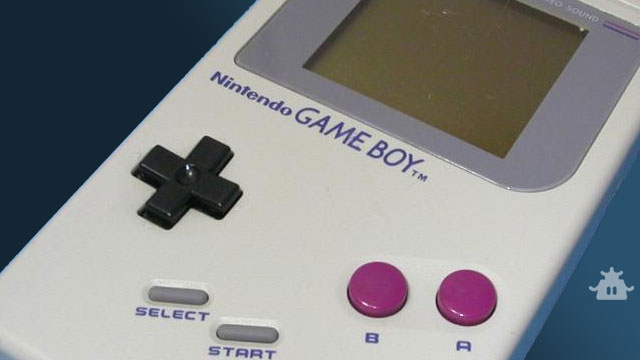
From the very beginning, games have been a rooted phenomenon. We are tethered to a television, to a wall socket, to a controller. But with the advent of successful portable systems such as the Game Boy, a new subset of the industry was formed: the handheld realm. Portable gaming is not just a shrunken and battery charged version of its home brethren, but an entirely different platform with its own set of rules. But what exactly sets home consoles and handheld systems apart?
The most obvious difference between the two platforms is the portability factor. Game Boy and its ilk completely disavow the old ritual of curling up in front of the television for some good old fashioned gaming. With a portable system, you have everything all inside of one device, ready at your fingertips. The simple advantage of being able to play a handheld outside or while traveling cannot be understated. They allow us to bring our games with us in a convenient manner. But the physical aspect of the handheld device is hardly the most important distinction it gives it from the home console. If handhelds were simply home consoles condensed into a portable device, and nothing more, there would be no innovation to be found.
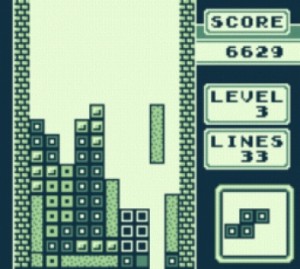
These are the blocks that dreams are made of.
Nintendo chose to launch the original Game Boy with Tetris because they knew it was a perfect fit for a portable system. Certain types of games just play better when on the go. Puzzle games were among the first genre to be discovered as a perfect fit for handhelds. Simple sports games and novelty games like pinball also thrived on a portable platform, where they could be played in quick bursts. Another genre that takes advantage of this concept of quick playability is the turn-based strategy game. Early entries in Nintendo’s Wars and Fire Emblem series were on home consoles, but they have slowly started to gravitate to handhelds. Sitting down on a couch and sifting through units and guiding troops can be a real hassle, but on the go it’s a snap. Going portable also really improves the playability of traditional games in a video game setting, like card games and board games. Clubhouse Games is one of the simplest and easiest to play Nintendo DS games there is. But could you imagine playing it on a home console? Not a good fit at all. The ability to simply turn on a handheld, play a level, and turn it off is in stark contrast to a home console. Home systems require users to set it up, sit through a power up screen, and dedicate themselves to a game.
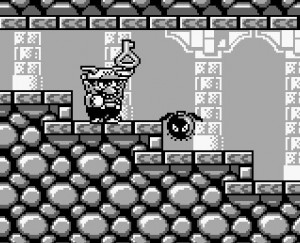
Wario has always held the key to my heart.
Like strategy games, platformers have also moved to become a big part of the handheld scene. In the mid ’90s when the 32 and 64 bit consoles started coming out, traditional 2D platformers were basically abandoned by the home market in favor of new 3D games. However, handheld systems remained a safe haven for gaming’s coolest genre (If I don’t say so myself). Because portables run off of older home console technology, they are essentially extensions of old systems and their games. The original Game Boy, Game Boy Color, and Game Boy Advance allowed for NES and SNES games to be made well into the 21st century. Developers working on handheld systems were given more time to explore the limits of their technology. This led to the creation of more complicated games over time, games like Drill Dozer, Mega Man Zero, Castlevania: Dawn of Sorrow, Metroid Fusion, and the Wario Land games. Note that any of these games could have been originally produced on the NES or SNES. However, by the time these were made, the home console market had moved on to produce different types of games. Portable systems continued to carry the torch of 2D gaming until the recent home console sidescroller boom that started with the release of New Super Mario Bros. Wii, which led to a comeback of 2D style games at home.
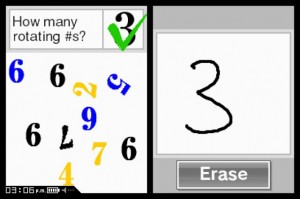
Keeping track of spinning numbers make me feel like a genius!
While some genres of games gradually realized they were a better fit for a portable, there’s also certain types of games that originally just didn’t have a place on home consoles at all. This can happen in cases where a game is a risky new idea that a company might not want to invest in for a full home release, or just a weird concept that would be more suited to a portable platform. Handhelds offer a sort of testing ground for new concepts and ideas that probably would not see the light of day if pitched for a home console. We have had many successful franchises that had their beginnings on portables and became quite successful: Kirby, Warioware, Wave Race, Rhythm Heaven, and Brain Age to name a few. Each of these series had new ideas for the time that just worked better in a handheld space, and some even eventually moved up to be made into full scale console productions. Kirby’s Dream Land was meant to be a break from typical platformers by offering carefree and easy play. Wave Race was nothing more than a simple racer with little depth. Brain Age was a brand new idea to gaming that could have never worked on a console. And of course, we can’t forget the most successful of all handheld series: Pokémon. I could spend an entire article explaining why the Pokémon games are a perfect fit for a portable and just could not work otherwise, but you’ll just have to trust me for now. Pokémon takes advantage of certain aspects of the Game Boy and Nintendo DS hardware that simply do not exist on a home console.

“It’s time to ditch the lunchbox. I can please you in ways your GameCube never could…”
And that’s what brings us to the last strength that portables have when compared to home consoles. With the advent of the Nintendo DS, it was no longer a matter of some types of games simply being more suited for a portable. Games could be made for DS that just could not be replicated on a home system period. The Game Boy introduced the idea with games like Pokémon that depended on player interaction in a physical space. You can’t link up and trade two home consoles! The DS took this idea and ran with it by introducing a myriad of features that took portable gaming past just being a time capsule or a testing ground. Features like touch screens, dual screens, microphones, cameras, and wireless linking have turned portable gaming into a truly novel experience that has games that are wildly different from their console counterparts. This offers even greater opportunities for innovation that can’t be replicated at home.
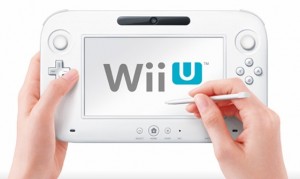
Draw naughty pictures like in Pictochat, but now in HD!
Of course, gaming has come full circle with the introduction of the Wii U. Where portables once took inspiration from home consoles, the opposite is now true. We will be able to experience DS-style games on the big screen. Where will portable gaming go now? With mobile games on smartphones quickly taking over the market, portable games seem to be focusing on the cheap and quick play approach to draw players. However, systems like the Nintendo 3DS and PlayStation Vita prove that there is still a place for advanced portable gaming, and I’m anxious to see where it goes.




 ShareThis
ShareThis







I love both handhelds and consoles pretty much equally. Both types of systems offer awesome games and game play.